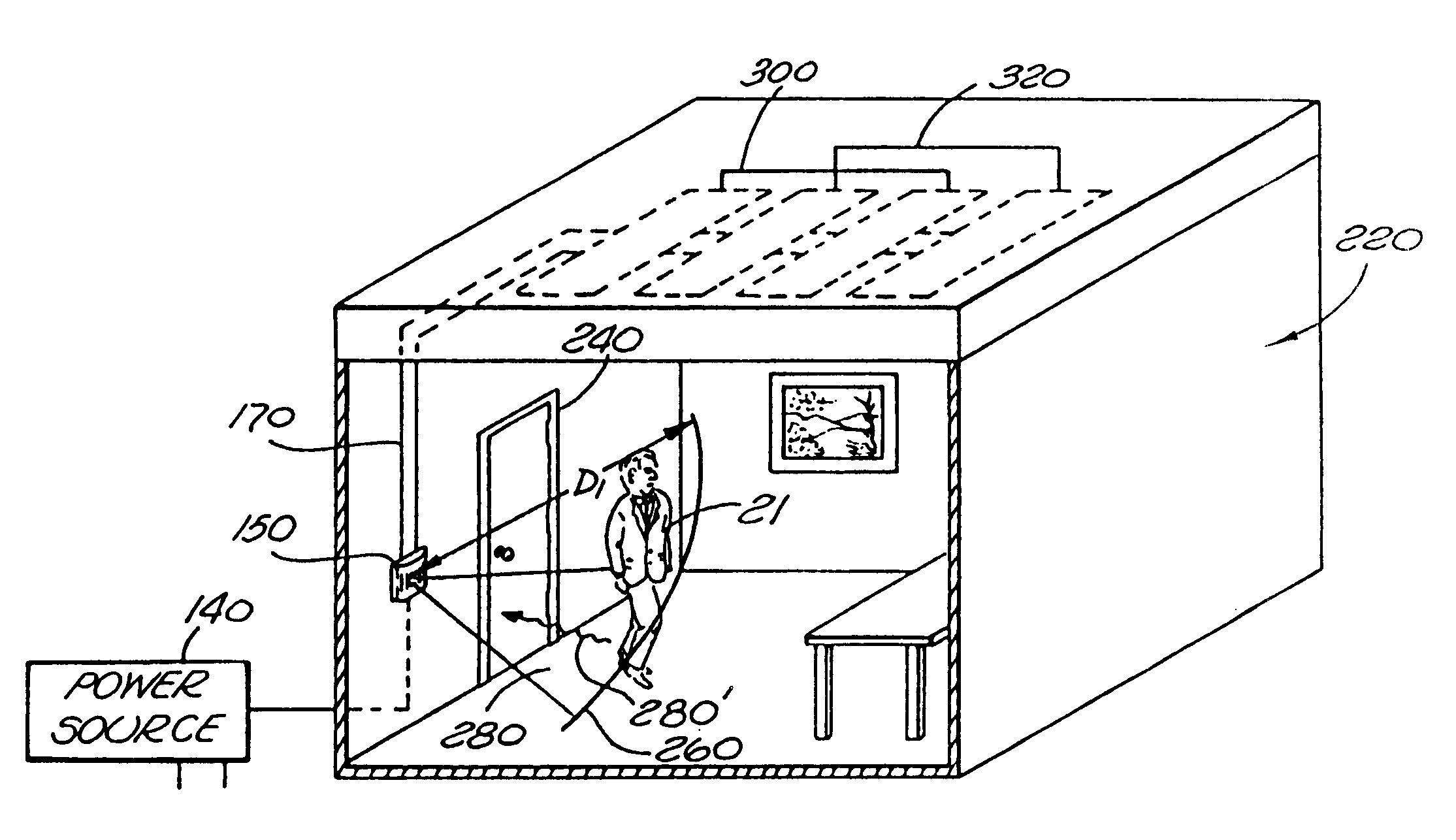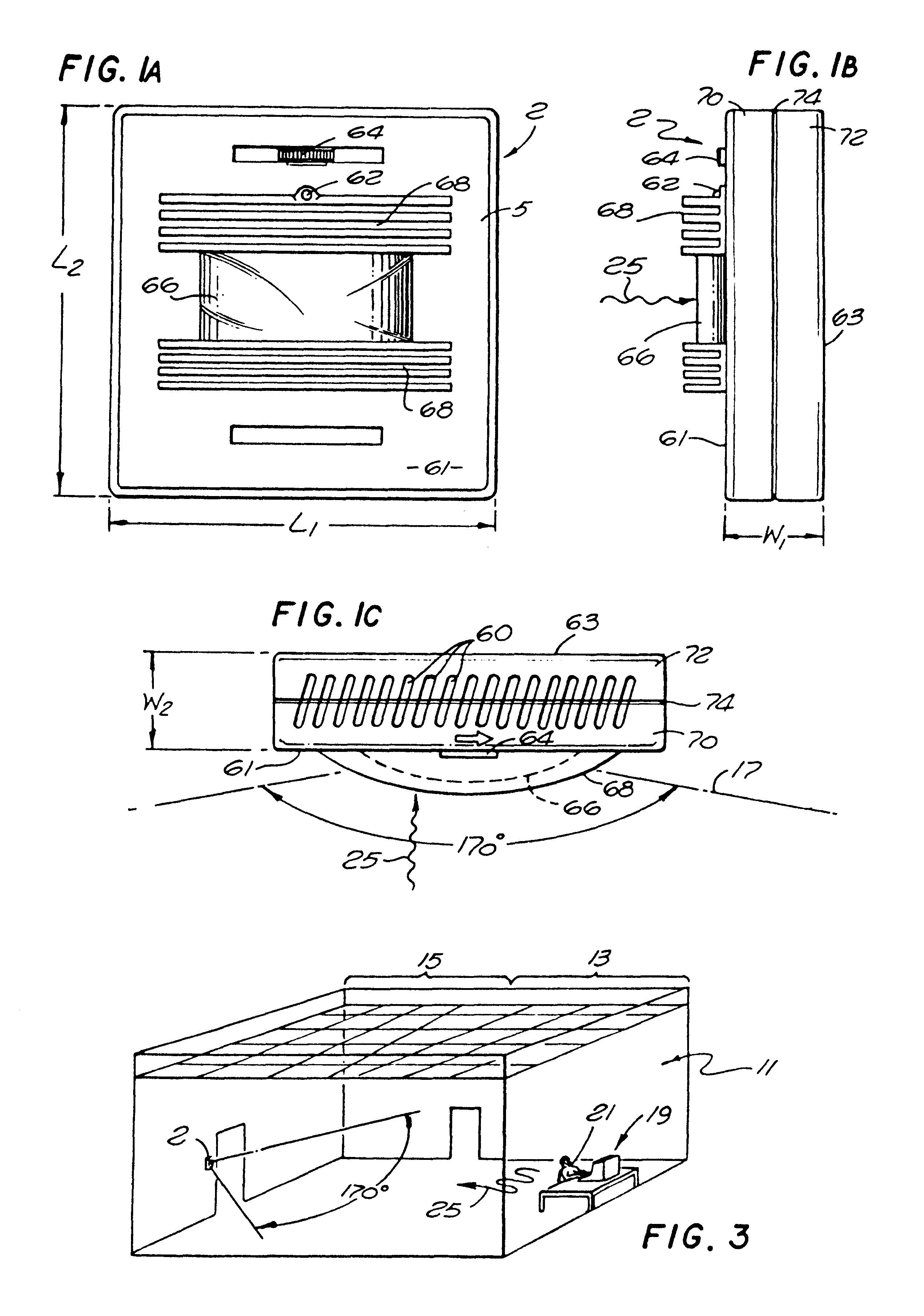Fully automatic energy efficient lighting control and method of making same
a fully automatic, energy-saving technology, applied in the direction of counting objects on conveyors, instruments, optical radiation measurement, etc., can solve the problems of inefficient conventional manual switches, inefficient existing automatic wall switches, waste of energy, etc., to reduce detection range, high sensitivity level, and high sensitivity level
- Summary
- Abstract
- Description
- Claims
- Application Information
AI Technical Summary
Benefits of technology
Problems solved by technology
Method used
Image
Examples
Embodiment Construction
An energy efficient light switch, such as an infrared light switch in accordance with one embodiment, replaces an existing standard wall switch and consists of at least two infrared detectors which can provide the device with a sweep of 170.degree. to 180.degree. within a bounded area. The infrared light switch is preset by the user to selectively activate all, none or a portion of the lights activated by the switch using the three-position switch. Through the use of two passive infrared detectors, the energy received by those detectors is converted to signals which are then separately amplified, mixed and then jointly amplified. The mixed and amplified signal is sent to a window comparator which compares the amplified and mixed signals to two predetermined known voltage signals. If the received, amplified and mixed signal is greater than the high setpoint of the window comparator, or lower than the low setpoint of the window comparator, a signal indicator is initiated indicating mo...
PUM
 Login to View More
Login to View More Abstract
Description
Claims
Application Information
 Login to View More
Login to View More - R&D
- Intellectual Property
- Life Sciences
- Materials
- Tech Scout
- Unparalleled Data Quality
- Higher Quality Content
- 60% Fewer Hallucinations
Browse by: Latest US Patents, China's latest patents, Technical Efficacy Thesaurus, Application Domain, Technology Topic, Popular Technical Reports.
© 2025 PatSnap. All rights reserved.Legal|Privacy policy|Modern Slavery Act Transparency Statement|Sitemap|About US| Contact US: help@patsnap.com



